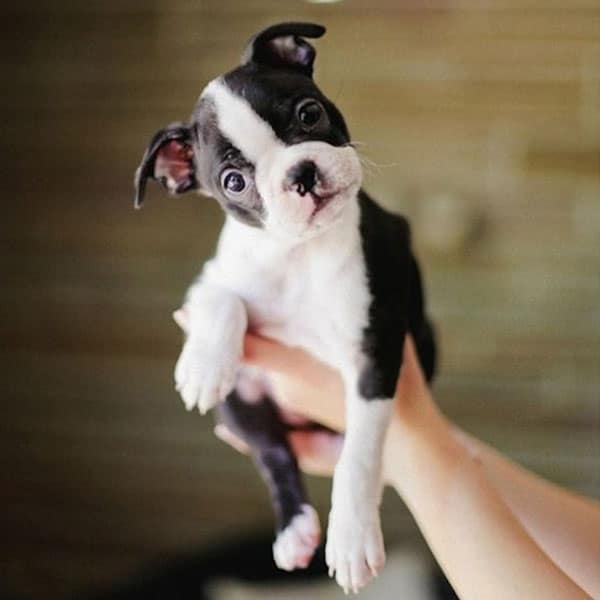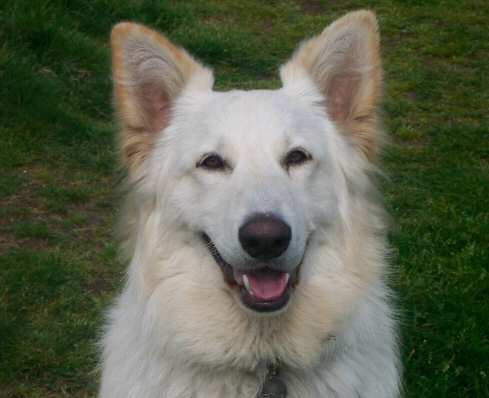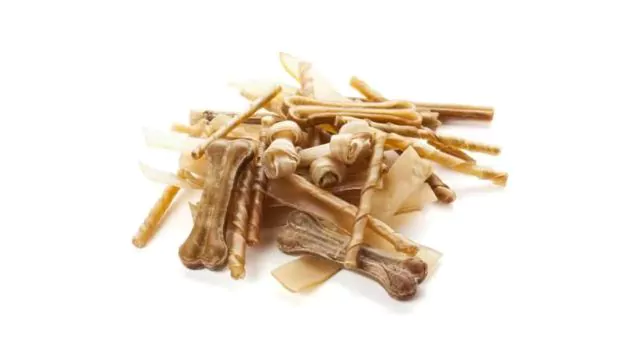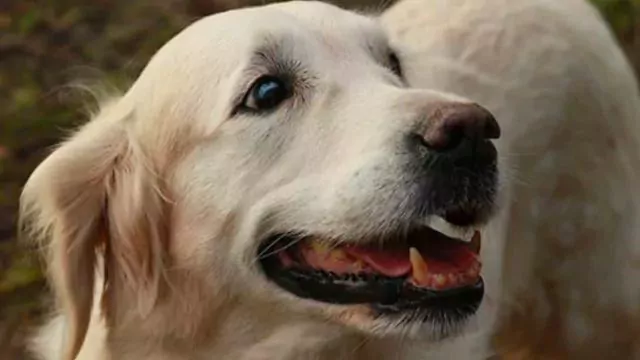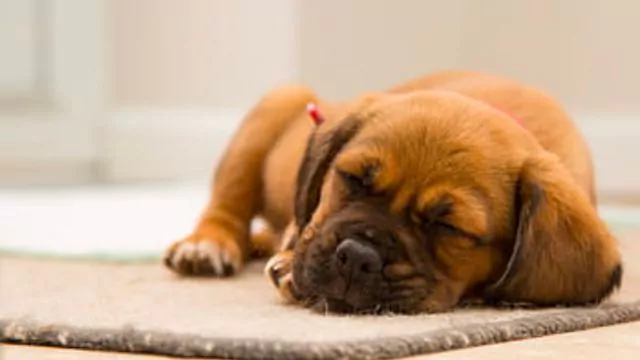Superb Collection of Tips for Dogs and Cats
The very best 40Top Tips for your Dogs from Doglistener the Behaviourist. How do you stop your dog’s urine from burning the lawn?…….Look no further
Superb Collection of 40 Top Pet and Dog Tips
1. Is Your Dog Regularly Getting the Runs?: Add bio yoghurt to their feed. Quite often this can be a bacterial imbalance. Especially if it is happening on a regular basis. The bio yoghurt is a probiotic and sometimes sorts this type of problem out fairly quickly. However, if the situation continues to occur see your Vet.
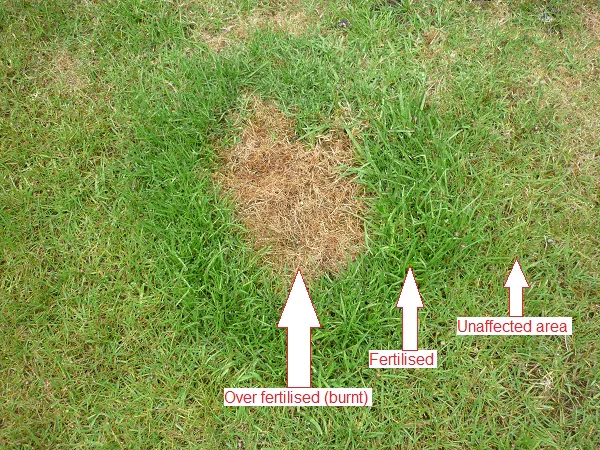
Therefore, the nitrogen in the urine causes the lawn spots. We all know that Nitrogen is a great fertiliser but not in these doses that is why the outside of the brown spot is quite lush.
There is also something called DOG ROCKS the ones I use are Australian and are the only ones that have ever worked. I now sell them in my store. that is safe for all of your pets, young and old. It starts improving your lawn within a fairly short period of time. You should see a major difference within a couple of weeks depending on growth spurts. They normally need to be replaced about every 2 or 3 months and should be placed into no more than 2 litres (0.5 gals) of water.
Dog Rocks work like a sponge! The minerals in the natural occurring igneous stone cause a magnetic charge in water and in turn cause an ion exchange, The ion exchange absorbs any impurities in the water such as tin, nitrates and ammonia leaving it instead in a purified state for your pet. As they drink this, fewer nitrates enter their bodies meaning their urine causes no burn marks.
Another method though not as effective as the dog rocks is a dose of one teaspoon to one tablespoon of apple cider vinegar (depending on the size of the dog) per day may nullify the Nitrogen imbalance and may solve the problem.
The apple cider vinegar can be added to the dog’s water or put directly on his food. The natural type from a health food store, not the pasteurised version from the supermarket.
If the dogs have already urinated and she has not been treated with rocks or apple cider vinegar, then saturate the urinated areas (spots) with water. This will allow the excess nitrogen to leach or dilute through the lawn and reduce the concentration in one area. It is usually best to treat the areas up to 9 hours after urination and to apply at least three times the amount of water to urine to the area.
3. Insect Stings to Dogs or Cats: Slice a raw onion and apply to the sting as soon as possible, If the sting is inside the mouth always keep “Antihistamine” capsules in your first aid kit. A rapid administration soon after the sting can prevent serious complications. You can also get antihistamine in liquid form which makes it easier to dispense. To administer liquids pull out the jowl near the back teeth it makes a sort of little cup, then just pour the measured liquid in, close mouth, tip head back and massage throat.
Some dogs will actually swallow the insect live, which may continue stinging the dog internally and cause anaphylactic shock. In rare cases, death can result. This is caused by internal swelling of the trachea which cuts off the oxygen supply to the lungs. Quick administration of “Antihistamine” can reduce and even prevent serious complications. SPECIAL NOTE – Dosage will vary depending on the size of the animal. Check with your vet for the recommended dosage. Usually, they will refer to the animal’s weight as a guideline.
4. Sharp Object and Glass Eating: What do you do if your dog eats glass or other sharp objects like staples or small nails etc?
Dogs even eat ornaments, Xmas decorations, light bulbs and lots of other things that are sharp and therefore dangerous.
Here’s what to do. Go to the chemist and buy some cotton balls, make sure it is cotton balls and not the cosmetic puff things they are made of man made fibres.
Buy a carton of double cream and keep it in the freezer if in the eventuality of your dog eating something sharp.
Defrost the cream and pour some in a bowl. Dip cotton balls into the cream and feed them to your dog. Dogs less than 10 lbs should eat 2 balls which you have first torn into smaller pieces.
Dogs 10-50 lbs should eat 3-5 balls and larger dogs should eat 5-7. You may feed larger dogs an entire cotton ball at once. Dogs seem to really like these strange treats and eat them readily.
As the cotton works its way through the digestive tract it will find all the glass and small sharp objects and wrap itself around them. Even the teeniest shards of glass will be caught and wrapped in the cotton fibres and the cotton will protect the intestines from damage. Your dog’s stools will be a bit strange for a few days. You must be careful to check for fresh blood or a tarry appearance to the stool. If either of the latter symptoms appears you should rush your dog to the vet for a check-up, but in most cases, the dogs should be fine.
5. Bonding: If you want to quickly bond with a new pup or rescue dog. Masticate a piece of white bread till it is gooey then feed this as a titbit to the pup/dog for the first 7 days. You only need to do this once a day; it mimics the regurgitation process when pups and cubs are being weaned in the wild, this really helps them bond more quickly and therefore settle in much sooner. You can do this to puppies and rescue dogs
6. Constipation: If your dog doesn’t move his bowels for a day or two, or if he seems to have difficulty doing so, he may be constipated.
Give him a teaspoonful of milk of magnesia first thing in the morning, before his breakfast if you feed him twice a day. If he is often constipated, add more vegetables to his diet and also mix a teaspoonful of mineral oil in his dinner. He won’t taste it with the food. Do this until he is regular again. Also, be sure that he gets plenty of exercises. Lack of running, walking, and jumping can make a dog constipated. If this treatment does not work within 48 hours consult your Vet.
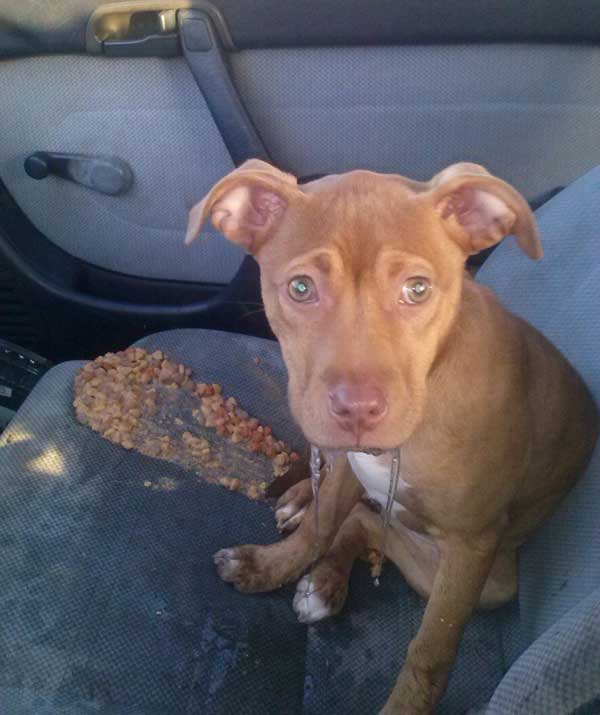
The biscuits can be fed as the dog gets in the car, which has an added incentive of the dog feeling that it being praised for just getting in the vehicle.
Make sure your dog does not have a heavy meal 6 to 8 hours before the ride. Most dogs don’t get carsick when their stomachs are almost empty
8. Grooming: I give all my dogs a splash of Salmon Oil once a day. I also use Mane and Tail especially if they get seeds and burrs in them it stops them from getting badly tangled makes them far easier to groom and leaves the dogs with a brilliant shine. Especially good for gundogs that get covered in all types of burrs
Mazola corn oil is also very effective In conjunction with the oil, I use a FURminator, you can purchase them from my website it strips all the dead hair off and shines up the coat better than any other brush on the market.
I also use a Furminator. Probably the very best grooming tool in the World.
9. Grooming 2: Irrespective of the dog.s coat long or short groom daily. Even if it’s only for a couple of minutes and make sure you groom over the withers. This helps in bonding and social status. It also gets your dog used to being groomed. Grooming is an important social gesture. That is why some dominant dogs object to being groomed, they don’t believe you have the right or the position to initiate this action. See my article on the importance of Grooming
10. Tears Stains and Bacterial Infections: Wet areas on the face are a breeding ground for bacteria and yeast. Bacterial infections commonly occur in the tear ducts. “Ptirsporum”, red yeast bacteria, is at the root of most yeast infections. Tear stains also often occur at the same time as a gum infection or ear infection. Staining can also occur on a dog’s paws from licking and around his mouth from infected saliva.
Apple cider vinegar (in its natural form from a health food store, not the pasteurised version from the Supermarket) is a natural antibiotic, antiseptic, and deodorant; It helps digestion and to remove tooth tartar; prevents tooth decay and hair loss (even mange), it also prevents and heals gum disease and skin problems; and will discourage fleas. Putting a teaspoon of apple cider vinegar per quart of water in your dog’s water bowl or on food can clear up most active yeast infections and prevent future infections. Apple cider vinegar tablets can be used if your dog refuses to drink the treated water or eat the food.
11. Halitosis/Dog Breath: Halitosis, or unpleasant breath, can be caused by a stomach problem, bad teeth or tonsils, or something that is stuck in the dog’s mouth or throat. Look at your dog’s teeth to see if any are decayed. If not, then give him Johnson’s Sweet Breath Tablets are a fresh mint flavour, which helps control breath and body odours. Bad breath is common in dogs and cats these tablets certainly help, but it is also worth checking what is causing these symptoms..another alternative is 3/4 teaspoonful of bicarbonate of soda in his food twice a day for a few days. If his breath is still offensive, then take him to a vet to see if he needs his teeth cleaned or his tonsils treated.
12. Cuts: If your dog cuts himself slightly, put some boric acid solution or some peroxide on the cut and then leave it alone. It will heal up quickly. If the cut is deep, or if it doesn’t stop bleeding, pack gauze or clean rags around it and take him to a vet. If the cut is on his leg or foot and bleeds copiously, tie a piece of cloth tightly around his leg, between the cut and his body, release the pressure every ten minutes, and take him to a vet at once.
13. Electric Shocks: Once in a while, a silly puppy will chew through an electric cord leading to a lamp or a radio or a toaster. The shock he gets is normally not serious (though in certain circumstances has proved fatal); however it can sometimes be strong enough to knock him out. If this happens, put a little household ammonia on a wad of cotton and hold this under his nose. Don’t touch the nose with it, as the ammonia will burn his skin. The sharp odour will bring him round. When he does come around give him some cool, strong, black coffee to drink. If his mouth seems burned by the shock, wet a cloth in strong, cool tea and wash the burned place with this. Take him to the vet if he seems burned or injured in any way.
14. What if your dog swallows a dangerous object: It’s a rare puppy that doesn’t swallow at least one strange object which his stomach cannot possibly digest. But a dog’s stomach is so constructed that it can usually take care of most of the odd things that find their way into it. If you should see your dog swallow something you know is bad for him a piece of rubber toy, a ball, a large splinter of bone or a metallic object, here’s what to do. Give him a large piece of soft bread to eat. Then toss about two teaspoonfuls of salt on the back of his tongue, close his mouth with your hand and keep it closed until he swallows the salt. Now put him on a newspaper or some other place where he can vomit without doing any damage.
In a short time, the salt will cause him to throw up the bread and it should adhere to the gooey bread. If this doesn’t come up the first time give him another dose of salt after about 5 minutes. Once the object is vomited, He should be fine. However if he begins to have diarrhoea, or if his stomach swells up and appears tender when you touch it, give him a tablespoonful of mineral oil. If he still seems to be in pain, or if there is any blood in his urine or no bowel movements take him straight to a vet. Never induce vomiting if the dog has ingested bleach or anything acidic or really sharp. Washing soda crystals are even more effective than salt if you have them available in the house.
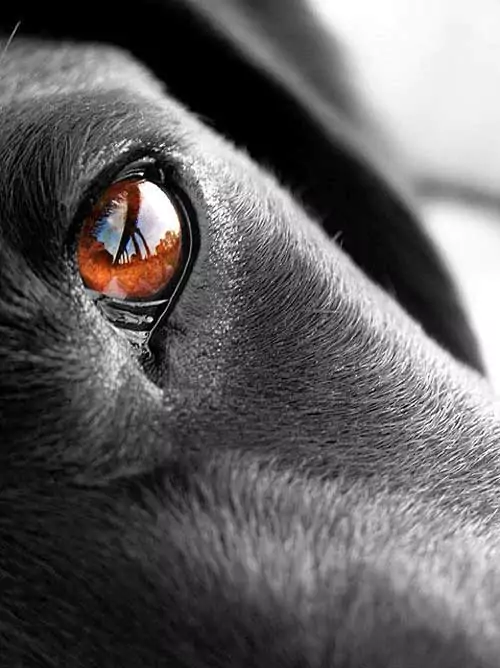
Squeeze a few drops of this in each eye. You can also use plain warm milk for this purpose.
If your pet has got some mild conjunctivitis try warm used tea bags if the infection is more than mild then purchase some Golden Eye from the chemist (cream not drops) and treat for three days this clears up most infections,
however, if he still has problems a visit to the Vet is in order. In case of a real injury to the eyes from a dogfight or something poked into them, put a pad of gauze soaked in boric-acid solution 50/50 ie warm water and boric acid over the eye that’s hurt.
Then wrap a towel loosely around the dog’s head and take him at once to a vet.
16. Commands: Avoid giving your dog commands that you know you cannot enforce. Every time you give a command that is neither complied with nor enforced your dog learns that commands are optional.
One command should equal one response, so give your dog only one command (twice max!), then gently enforce it.
Repeating commands tunes your dog out (as does nagging) and teaches your dog that the first several commands are a “bluff ‘.
For instance, telling your dog to “Sit, sit, sit, sit!”, is neither an efficient nor effective way to issue commands.
Simply give your dog a single “Sit” command and gently place or lure your dog into the sit position, then praise/reward. One command should equal one response, so give your dog only one command (twice max!), then gently enforce it.
17. The Dogs Name: Whenever possible, use your dog’s name positively, rather than using it in conjunction with a reprimand, warning or punishment. Your dog should trust that when it hears its name or is called to you, good things happen. His name should always be positive and responded to with enthusiasm, never hesitancy or fear.
Imagine if you were a dog and 50% of the time when your name was spoken, you were yelled at or chastised. It would not take long to work out not to look up if there is a strong chance you are going to be shouted at, you can picture the dog thinking “Look at my paw because my face ain’t listening” I use “Bad” or “You” If I have to chastise or stop the dog from certain behaviour’s both have a good growly tone rather than using the dog’s name.
To teach your dog his name. Position your dog in the middle of two people, close enough to touch, Get some treats, high-value ones like cheese or liver. Say the dog’s name cheerfully if he doesn’t respond either touch his ear or his muzzle very gently. When the dog finally looks in your direction immediately use your Good Dog voice, and praise by using the word “good”“take it” then immediately give a high-quality treat. You could also use a clicker and click treat. Practice this until looking at you happens without the touch or treat, this takes about five days doing the exercise for a few minutes each day, continue to practice once a week for the dog’s entire life! It reinforces the communication link between owner and pet.
18. Supplements: People have been phoning and emailing me to ask if I use supplements and if so are they worth having as an addition to good quality food? The answer is yes!. Especially in very active dogs and dogs with injuries joint problems and diseases like arthritis. I have tested numerous ones there are two I would like to mention. Winston and Porter are the supplement specialists and they manufacture a number of supplements that can be added to the food or given separately I personally add it to the food. It covers all ages and breeds of dogs including puppies.
Joint Aid Is the second one I use is for all my senior dogs and especially for dogs that are arthritic is Joint Aid a small scoop a day makes an enormous difference. I came across this company called GWF Nutrition about 8 years ago whilst working with dogs at the East of England Showground and it made a massive difference to my White German Shepherd called Kai. He almost turned into a puppy again.and enjoyed his last years of life with this wonderful little formula. I put both Winston and Porter and Joint into the food once a day.
19. Puppy Teething: Most of the teething and chewing as apart from mouthing and nipping starts at about 4.5 months old. This is the time that the little piranha teeth laughingly called puppy teeth start dropping out, as the new adult teeth start pushing through. It takes anything up to 8 months for these new teeth to set in the jaw, whilst this is happening the pup has a need to chew.
To help soothe this and save your fixtures, fittings and furniture. Get the pup a plastic flower pot. Not the thin brittle ones but a fairly thick substantial one, this will help his gums and soothe the itching. Another great help is getting a knotted rope you buy as a tug, soaking it in water and put it in the freezer. The ice that forms really helps hot and itchy gums. Also, freeze carrots and whilst frozen give teething pups a great and nutritious soother. Rather than making all this up then the best treats I have used for the are Bulls Pizzles and Calves Hooves I sell both
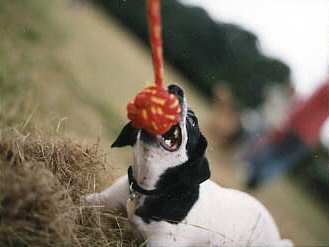
20. Games of Tug: I don’t like games of tug at any time, except with a particularly timid or frightened dog then I will play and let the dog win to build up some confidence.
However I never ever play tug with a puppy whilst it has its puppy/piranha teeth. It actually has little or no jaw muscles at this time, therefore, you can dislocate the jaw or even misalign the teeth by playing rough house tug games.
You may also be setting the scene for aggressive confrontations later in the puppy’s growth cycle.
It would be better to play games of find, hide little bits of treats in the house and garden and encourage the dog to search them out, or ball games these all help dispel some of the pup’s energies and to stimulate the mind.
I had an altercation with a forum called Champ Dogs, run and controlled by people that clearly think they know a lot about Dogs but in reality, know very little. Everything was based on emotion, rather than reality and common sense. I found some of the advice dangerous.
I was howled down when I suggested that they should not play tug with their dogs they actually said that if you couldn’t play games like that then it’s not worth having a dog and they would have it put to sleep. Some of these people are very very sad.
21. Fussy Eating: I am told by countless owners that their dog will not eat dry food/ or many other types of food and that they will only eat smoked salmon/steak/or best mince etc. This is because we actually teach our dogs to be fussy and picky eaters by free feeding. That is leaving down food all day. The dog then comes to the realisation that it can eat at any time and does not fall into any normal routine.
Free feeding can also have an effect on control complex behaviour also known as “dominant behaviour” though that term is vastly overused, free-feeding can give the message to a socially mobile dog that he could be a controller of resources as he has access to food at any time this can also encourage guarding behaviour. Time to re-educate, decide on how many times you will feed per day if he is over 1 year then this will be either once or twice.
Feed the food of your choice, not the food of his choice I am a firm believer in quality food whether that be raw cooked or dry. Put this down for ten minutes only, if the dog has eaten it in that time fine, if not pick the food up and put it away.
When the next meal is due then only put out an amount of food you would normally feed do not double up. It may take a few days for the message to get home, but it will in the end. Remember the dog comes from an animal (The Wolf) which is a feast and famine eater; they sometimes go many days or even longer between kills or scavenged food, so your dog will not starve, instinct and survival will take over and the dog will resume eating the food you choose not the food he chooses.
Many people think that it must be boring feeding them the same thing every day, but do not realise that supplementing quality food with cheap low quality tinned or pouch food is like putting tomato sauce on Lobster Thermidor.
We also assume that taste is a factor. It isn’t’, dogs have only 10% of our taste capacity, let’s face it if they can eat their own and other animals faeces and sick which many do, then their choice of taste and quality must be in question. I personally feed Fish4Dogs and Bella and Duke and Paleo Ridge I stock all of these in my physical Store soon to be moving to Hampton Hill
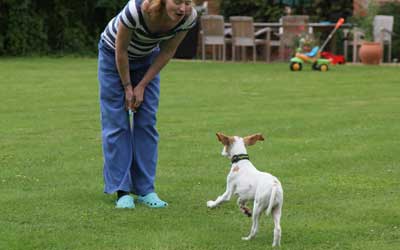
The owners probably in a hurry get angrier and angrier and start shouting, which of course exacerbates the situation?
Giving the dog, even more, reason not to return, as he is aware that he may get smacked. All this is caused because the owner did not correctly lead train and stimulate the dog in the park in the first place.
He/She actually taught the dog not to come back, by only putting the dog back on the lead at the end of the walk.
It doesn’t’ take long for the dog to click on that recall and lead means the end of fun and the end of the walk.
In some cases, the owners are on their mobile phones constantly. Go to any park and see the dozens of people on mobiles walking their dogs, the poor dogs have to stimulate themselves as they are constantly ignored by their owners. This then starts a chain of events such as running off to other dogs and people for the attention that they crave.
Give your dog’s quality time and quality training during the walk, call your dog back to you at least three or four times and place it on the lead and reward with a brief game or a tasty titbit then let it off again.
Your dog will then learn that coming back to you is good news and being placed on the lead does not mean the end of the walk and end of play! Play hide and seek behind trees etc, it doesn’t’ think you’re hiding it thinks you are getting lost, this is especially important with a young pup. Switch off the mobile and play games, with your dog and he will have no need to wander off and not want to return. Read my full article on RECALL
23. Kennel Cough: Why do vets give Antibiotics? If I am not mistaken this is a viral-based condition, therefore antibiotics will not work. Try Baby Benylin Dry Cough mixture twice a day will help to relieve the irritation. Also avoid any pressure from a collar, as this will exacerbate the condition. If you must go anywhere with your dog on a lead do not overdo it.. Avoid areas where there are other dogs and if visiting your vet, make the last appointment. Leave your dog in the car, then go and tell the vet staff you are outside. or ask to be placed in an isolation room. This will help to reduce the spread of this highly contagious disease.
24. Timidity and Fears: How many times have you seen a dog shaking or cowering and the owner sympathising and reassuring it, with petting and nurturing? This may appear to be perfectly logical behaviour, but is actually giving the dog all the wrong signals and rewarding it for being timid and nervous and confirming it has a reason to be fearful.
The very thing you are trying to cure is reinforced by your actions. The shy and timid dog should be exposed to as many different situations as possible. Take it along with you to the shops, the bar or the pub, and everywhere you can introduce it to new sights sounds and smells. Don’t push it into fearful situations but gently desensitise it to the things it fears praise for calmness never for fear,
Consistent treatment in this manner will begin to deliver the message to the dog that there is nothing to fear. Do NOT cuddle the dog, or hug it and tell it there is nothing to fear. Dogs do not understand most of the words we say — they understand our actions. If the dog gets a hug, it assumes it has done the correct thing and will continue to be fearful. because you have reinforced the fear. See my article on Fear and Timidity in Dogs
25. Tags and Identification: It may surprise everyone to know that the maximum fine for not displaying a dog identification tag in the UK is £5000. (Where did they get that figure from?) Irrespective of whether your pet is already microchipped. The law which is the Control of Dog Order 1992 states that “Every dog while in a highway or in a place of public resort, shall wear a collar with the name and address of the owner inscribed on the collar or on a plate or badge attached thereto”. I would also recommend you put your mobile number on the disc in case you are away on holiday with the dog; the home number would be useless if your dog then goes missing.
26. Shy Timid or Frightened Dogs: I am a firm believer that Socialisation is so vi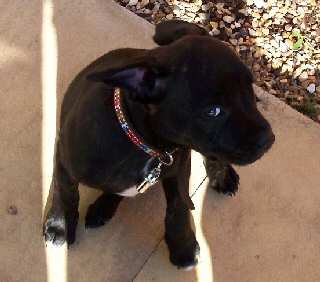
The fear of infections has led breeders and owners alike to make the tragic mistake of keeping their puppies isolated until they have completed their vaccinations.
By taking this stance they risk ending up with a fearful, timid dog that may become aggressive as an adult. “95% of all reported dog bites are fear related”.
Owners should strike a commonsense balance: puppies, especially from birth through to 16 weeks must be exposed to a variety of people, other dogs and many other experiences they will meet in everyday life.
There are many activities and places to take dogs; without endangering their lives, it is vital that you take the time to expose your new pup to as many of these as possible.
There are many vital components to create the perfect dog. However, the two most important are 3 to 12 weeks Human Socialisation Period and 3 to 16 weeks Canine Socialisation Period.
This is also true for one’s second or third dog; it is too easy to keep the new pup in the company of the older dogs, depriving him of the opportunity to develop his own self-confidence without relying totally on the older dog/s and their protection. Puppies have a need to play with other puppies, not just adult dogs, They learn very important lessons like bite inhibition and canine communication and body language from that rough and tumble play. Read Puppy Socialisation
27. Complementary Therapies: I am a strong advocate of some complementary medicines for dogs especially in areas of Timidity, Fear and Anxiety. The more common and easily obtainable are Dr Bach’s Rescue Remedy, ( Flower Remedy) (chemist or health food shop, internet and Me ).and Skullcap and Valerian (herbal remedy) (internet and of course me)
These can be especially helpful in situations such as separation anxiety, excessive barking, firework and Thunder phobias. To learn more about these products and other holistic medicines for your pets go to my Holistic Medication Page
The scientific community, including the first professor of complementary medicine Edzard Ernst, states: There was no condition which responded convincingly better to homoeopathic treatment than to a placebo or other control interventions. Similarly, there was no homoeopathic remedy that was demonstrated to yield clinical effects that are convincingly different from a placebo. You could also go to my main menu and read my article on Fearful and Timid Dogs which is where these last two tips have been taken from. Please CLICK for further details of Professor Ernst’s findings and claims.
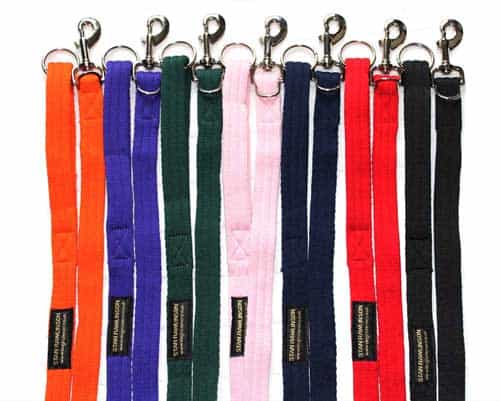
Tighten it at the wrong time and you can send messages that could spark aggression, fear, or anxiety.
Use it to drag your dog around and it could damage his neck and spine, especially if it connected to choke chains which I abhor.
Used correctly it can be a godsend almost the only training aid you will ever need. All training including sit, stay, down, recall, sit stay, wait etc should initially be trained on a lead.
Unfortunately, most of the leads I see are far too short to be effective and are of a material that hurts and can burn and damage your hands.
The lead should be at least 5.8″ foot long irrespective of the size of the dog. this will help all training and lead work in the future, it should be made of something like Cushion Web which is extremely strong yet soft, (sounds a bit like an advert for toilet paper) NOT Nylon which is harsh as can burn and damage your hands.
The problem is that most lead manufacturers haven’t a clue about dogs and what constitutes a good lead, they just produce what makes the most profit. Good quality leather leads are OK though I find them a bit hard on the hands at first.
Shop around till you find what you want, don’t be fobbed off with what the industry or pet shop wants you to buy. I have my own Cushion Web leads made for me, therefore all my clients normally have one of these. contact me for my personally designed leads or order them from my Website.
29. Counter Surfing: This is where dogs are constantly picking things up either from the floor tables or kitchen worktops, at best it can be frustrating and annoying, at worst it can be fatal if they eat something that is dangerous .My Jingler technique can sort this out see Jingler Further Information. It also has a video clip on the page on what to do.
30. Dogs Ages in Human Terms: If I were to stop 100 people in the street and ask them how do you calculate a dog’s age in human terms, 90% would say one dog year to every seven human years the others 9% would probably say they don’t know and 1% may know the correct calculation. This is one of many old wives tales that are generally wrong.
As a general rule of thumb, it should be fifteen for the 1st year ten for the 2nd and then four for every year thereafter. This is only an approximation. There is a chart that works on size and breeds, which makes it far more accurate. If you calculated every seven years and the dog is 16 years old then the dog in human terms would be 112. Using my method the dog will be a realistic 81. We are all aware that a one-year-old dog does not act like a seven-year-old child. It is far more like a Kevin the rebellious teenager round the back of the bike shed having a quick fag. Dogs are also more aware of the opposite sex than most seven-year-olds would be
31. Fleas: If you want a natural method of flea control give the dog a clove of garlic take the skin off first as this is related to the onion family and the skin part can have an adverse effect you can chop this up and put it in his food each day. You can also purchase granulated garlic from a horse tack shop at a very reasonable price. which is what I use. Fleas really dislike the taste which exudes out of the dog’s skin and should soon go looking elsewhere for a more tasty meal.
32. Dry and Crusty Nose or Skin: Adding a teaspoon of flax seed oil to the dog’s food daily often helps. Dry noses and other dry skin complaints.
Some dogs respond well to a children’s multivitamin supplement (especially if they include vitamin B complex).
I have also tried Mazola corn oil and this works extremely well. Vaseline on the nose also helps the dryness.
I swear by Borage Oil for flaky dandruff that is greasy and crusty noses. However, if the problems persist see your Vet.
33. The Alpha Myth: Please do not follow the ludicrous assumption that we can be the Alpha in the dog pack. This is biologically impossible. Dogs are what is known as conspecific, that means they can only truly pack up with their own kind.
Unlike birds, dogs do not bond and lock onto the first thing they see when they are born. Dogs know when they meet another dog. When they meet humans they see us as a different species but intrinsically locked into their life as a resource of high value.
What is vital is that rather than pretending we are the Alpha we should train our dogs that we are controllers of resources and as such we will gain their respect in that position. Please read the Alpha Myth for the full story on how to get the best from your dogs. How many Wolves have you seen ignoring each other when they come back from the hunt? And how many have numbers on their back so they know when it is their turn to eat? Not many I would imagine. Because it simply does not happen in the wild.
34. Neutering (Spaying and Castration): Before you consider early “Neutering” (the generic term for Spaying and Castration) ask yourself, would you do this to an immature child? The detrimental effects are well known in humans but not so well known in our pets until recent scientific research. When we neuter we remove or reduce three very important hormones Oestrogen, Progesterone, and Testosterone. All dogs male and female have these hormones. by what degree each hormone is present determines the sex of the animal.
Without these hormones dogs (if immature when the operation is carried out) may not behaviourally and physically reach full maturity. Both physiological and psychological problems may occur because of these early invasive operations.
I see more behavioural problems with early neutered dogs than any other single factor. I have written four articles two on neutering and one as an exposé of some of the practices of breeders of Australian Labradoodles and pet welfare organisations especially the RSPCA who have admitted to neutering dogs at six weeks of age. To my mind that is abuse. see articles: Spaying and Neutering. Neutering the definitive answers. and RSPCA shock admission.
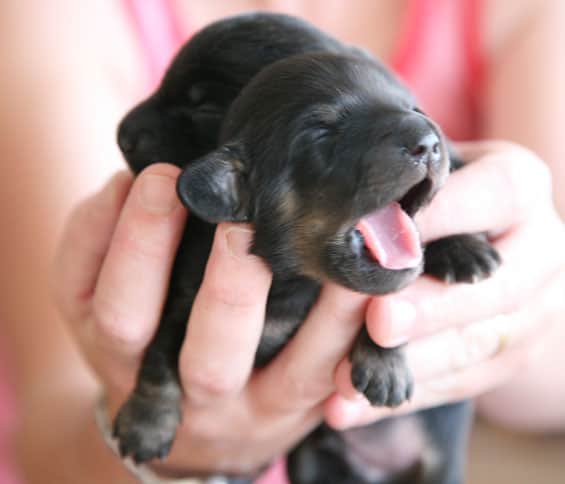
35. Puppy Crying at Night: It is entirely natural for a new puppy to call out for someone to come when separated.
Pups alone in the wild would not survive without this alarm system. Therefore all your new dog is doing is following instinct.
Either in the nesting box or in the wild, a puppy learns very quickly that when separated from the pack, calls for help will allow other members of the pack to quickly locate him.
If the puppy is very distressed and clearly upset, then I will often suggest allowing it to sleep in your bedroom, but within an indoor kennel/crate.
Then over a period of time move the crate in stages to the spot where you want the puppy to stay for instance the kitchen.
However, it is vital to have a playpen as well as the crate with paper down in the playpen NOT THE CRATE so that the dog can defecate and urinate.
Shutting the crate door on a very young puppy could be a total disaster. It can cause crate aversion and toileting problems, it will definitely cause anxiety.
Therefore until the pup is at least twelve to thirteen weeks old I would not shut the crate door overnight. (See toileting with a crate) also, Dog Treats For Dogs These can be given to help teething and keep the dog and puppy engrossed.
Then over a period of time move the crate in stages to the spot where you want the puppy to stay, for instance, the kitchen.
You will normally know if the puppy is seriously distressed if it starts throwing itself at the bars trying desperately to escape, defecating or urinating in the crate is also a sign of distress. See full article CLICK.
36. Puppy Nipping and Biting: Puppies have painfully sharp little piranha-like teeth, almost like hypodermic needles, fortunately, the jaw muscles are extremely under-developed, One of the main reasons why you should never play tug with a young puppy is you could dislocate the jaw and misalign or damage the teeth.
Nature has given them these underdeveloped muscles to enable pups to play-bite safely. Whilst very young and still with his brothers and sisters and he bites too hard in play he gets blasted with an ear-piercing “yelp” which makes him immediately back off, he waits a while then starts to play again, but a strange thing has happened, the biting is a bit softer. The same thing when feeding on the mother, the pup uses too much pressure she yelps and moves away from the puppy end of the milk bar. He is then gentler the next time around and a valuable lesson has been learned.
This is nature’s way of inhibiting the force of their bite well before the jaw muscles start to form properly at around about 4.5 months, which also coincides with the time that the puppy teeth start dropping out and the new bigger more dangerous teeth start to come through. This is called the age of cutting.
This learning process is known as “Bite Inhibition” it is a vital and important lesson and is the only reason why your puppies are born with those hideous teeth. This is how your puppy learns to inhibit the force of his bite and to control his jaws, It is vital that he also learns to inhibit biting us, humans.
Permit the puppy to play-bite by allowing your pup to softly chew on your hand. When he bites down a little harder than normal, “yelp” sharply and loudly, turning your head away in rejection. Do not pull your hand away. Let the puppy move away from the sound and your hand, (pulling your hand away will only encourage him to lunge towards the moving object)
As appeasement after your yelp, the pup may come up and lick your hand, accept this gesture. Then allow the play to resume, but this time hopefully with a softer bite. If the play gets a little rougher, “yelp” again, thus further confirming that any pressure is totally unacceptable. Repeat this exercise as often as possible. And like the New York police chief who had zero tolerance to a crime you do the same with any hard biting. The yelp should be short sharp and loud.
37. Crate Training: Dogs have a natural liking for enclosed sleeping places – think of how often your dog chooses to sleep under the table, against a wall or behind the settee! In the wild your dog would seek out a cosy safe den to sleep and rest up, that is all a crate is.
- The crate should be big enough for your dog to stand up, turn round and stretch out when lying down. If he is a puppy, allow for growth. Cover the crate with a blanket or sheet so it is dark, den-like and cosy.
- If the crate is quite big, section off part of it whilst the puppy is young this will prevent him from urinating or defecating in the corners. Never put newspaper in the crate this only stimulates the dog to eliminate in there, which defeats the object of using a crate for toilet training.
- To begin with, you will need to leave the crate set up all the time. Later you may prefer not to, and some crates fold flat for easy storage when not in use.
- When left in the crate your dog should have a toy or chew bone to keep him occupied when awake, soft bedding to sleep on, I prefer Vet Bed or the equivalent and a drink of water. Get a coop cup it clips or screws on the inside of the crate then you don’t get spills.
- Initially feed the dog in the crate every day, with the door open. This is an easy way to get him to like it. You should not be closing the door overnight until about 11/12 weeks of age as the dog may become very distressed as it is unable to control bowel or bladder movements until this age.
- To keep the puppy safe whilst you are acclimatising it to the crate. Purchase a Playpen these are available in most pet stores.
- Set the crate up in a quiet corner, and put the dog’s bed into it. At this stage, leave the door pinned open so that the dog is never fastened in by mistake and never gets stressed.
- Soon the dog should happily use the crate voluntarily. When you reach this stage, (NOT BEFORE) wait until he goes in for a sleep, then close the door. Stay in the room, and let him out as he starts to wake up.
- When your dog is used to this routine, leave him for a minute after he wakes up, with you still in the room. Gradually (over about a week) increase the time you can do this. If your dog gets distressed shorten the time on the next attempt. Don’t make a big fuss – sweet nothings and lots of attention can make him think you’re praising him for being distressed, and he’ll do it all the more. Aim for the “nursing sister” approach when she comes to give you a big injection, sympathetic but business like! See my article on Separation Anxiety
- When you can leave the dog like this, leave the room for a few minutes but stay in the house. Again, gradually increase the time you are out of sight till you can put the dog in his crate when you go shopping.
- Your dog should never be left in a crate for more than a couple of hours except overnight, and then do not lock your Puppy in until it is about 11/12 weeks of age. I now sell what I believe to be the best currently available. MY Crates
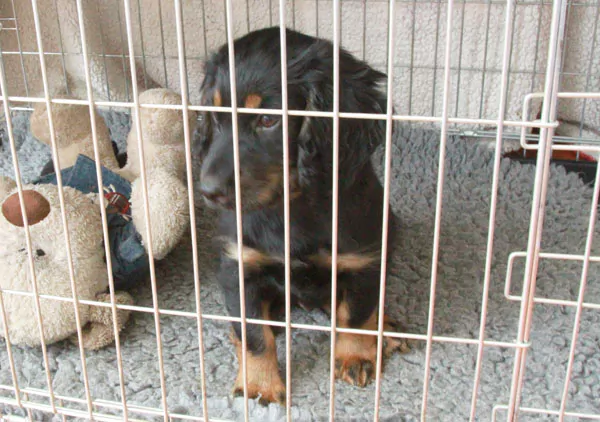
38. Toilet Training Puppies: You will need to crate train the dog for this to work quickly and successfully. See above.
If you feed and water your dog on a schedule, your dog will eliminate on a schedule. FREE FEEDING YOUR DOG WILL MAKE THE JOB OF HOUSE TRAINING MUCH MORE DIFFICULT.
First, establish meal periods. four meals for young puppies under 12 weeks and 3 after 12 weeks and a double meal period for adult dogs. The meal period should last for 10 minutes.
During that time give the required amount of food and as much water as the dog wants. At the end of the meal period, remove the food whether or not the dog has eaten unless instructed otherwise by your veterinarian.
If the dog plays and does not eat, he will soon learn that the food will be taken away. This also helps to discourage picky eating habits.
Many dog owners inadvertently teach their dogs to eliminate indoors. Each time they take their dog outside they wait for him to eliminate. As soon as he does, they bring him in. Most dogs, especially young ones, like the sights and smells of the outdoors.
So they quickly learn that as soon as they eliminate, they are taken inside. They learn to hold it until they come inside to prolong the experience.
It makes better sense to train your dog to eliminate on command, especially if you must lead walk him. Take your dog to “his spot” each time. As your dog begins to urinate, choose a word and say it over and over as the behaviour is occurring (I say “wee, wee”) do this each time your dog urinates. After several weeks of hearing “wee, wee” as he urinates, it will eventually act as a trigger for the behaviour.
I use a different phrase for defecating. Each time your dog finishes, praise him while offering a food reinforcement (a treat). I use cheese puffed jerky or frankfurters. When he has finished, take him for a walk as a reward! If your dog fails to eliminate in 5 minutes, (posh word for pee and poop) take him inside crate him for a half-hour and then try again.
The Instructive Reprimand each time you take your dog outside say, “Outside”. Soon he will learn what outside means Then if the dog inappropriately urinates inside in your presence, say “Outside” and take him to “his spot”. “Outside” becomes an instructive command because it directs the dog to the appropriate elimination place and it is a reprimand because of the tone of voice you use as the Behaviour is occurring, thus acting as negative reinforcement.
There is a device called a pee pole which is a pheromone impregnated device that is supposed to aid toileting I have mixed responses to this aid with some dogs it works well, particularly if you want them to go in a particular spot. With other dogs I find they pull them up and chew them, therefore, they are useless in that circumstance.
39. Pulling On The Lead: How many times I have had to rectify this common problem, will run into many many thousands of dogs. I do numerous outside displays in various parts of the country, where i take dogs from the audience and stop them from pulling within minutes. To be able to do this quickly and successfully I devised and developed a training aid called the Jingler Having clicked on the Jingler link you may also want to have a look at the snippets from my DVD.
It is actually quite simple to rectify if done properly and stops the need for halti’s or harnesses which cause distress and pain to many dogs. This technique allows you to actually train the dog to walk rather than just inhibiting its forward movement.
40. Preparing for the New Puppy: Check on the food the breeder is feeding, buy a crate, and Vetbed for inside. Bowls and a lead and collar. May I also suggest soft toys and buy a good whistle. I sell the very best. If you start really early with the whistle and follow my puppy recall tips you will have no problems later on in life See PUPPY RECALL
It is very helpful if you have left an unwashed worn tee-shirt on your first visit to the breeders so that the puppies will recognise your smell. This will also give the pup more confidence when you finally pick it up, as the pup will immediately detect your smell. It will also have the litter and mothers smell on the old tee shirt which will provide some comfort and security in the first weeks at home.
Check with other dog owners as to the best Vet in your area. always try and get an independent Vet, not a chain this is the reason why? Is the Veterinary Profession Broken. When you pick up the pup take a cardboard box with you and line it with newspaper. Take spare newspaper with you as the pup may be sick and will almost certainly urinate and defecate on the journey, especially if it is any distance.
When you get home place the bed or crate near somewhere warm, if you are using a crate and I heartily endorse them, cover the crate with a blanket or sheet to make it more den-like introduce the puppy to the crate gradually and positively, see my article on Toileting With a Crate. Seriously consider a Puppy Playpen for two reasons. You should never shut the crate door on a puppy until it is 12 weeks old. They cannot hold their urine and faeces all night until that age. Secondly. Dogs are teething sometimes up to a year, a playpen allows freedom when you are out with safety.
If you have a loud ticking clock put this near the bed or crate, you can also put in a hot water bottle; it mimics the mothers and siblings heat. Make sure it is well covered or you may get a very wet bed/crate, and the tick of the clock also mimics the pups heartbeats, leave a radio on in another room, make sure it is tuned into a talk, not a music station. Talk Radio is my favourite and the one I choose every time. Not sure about what the pup thinks though?
If the puppy continues to get very distressed after a couple of days you can take it into your bedroom, though I would only normally advise this when using a crate/indoor kennel, as you can gradually move this back to the original location gradually over a period of time, once the puppy has settled in. (See Puppy Crying at Night) and Crate Training Puppies
©Stan Rawlinson 2006
regularly updated the last update August 2020

